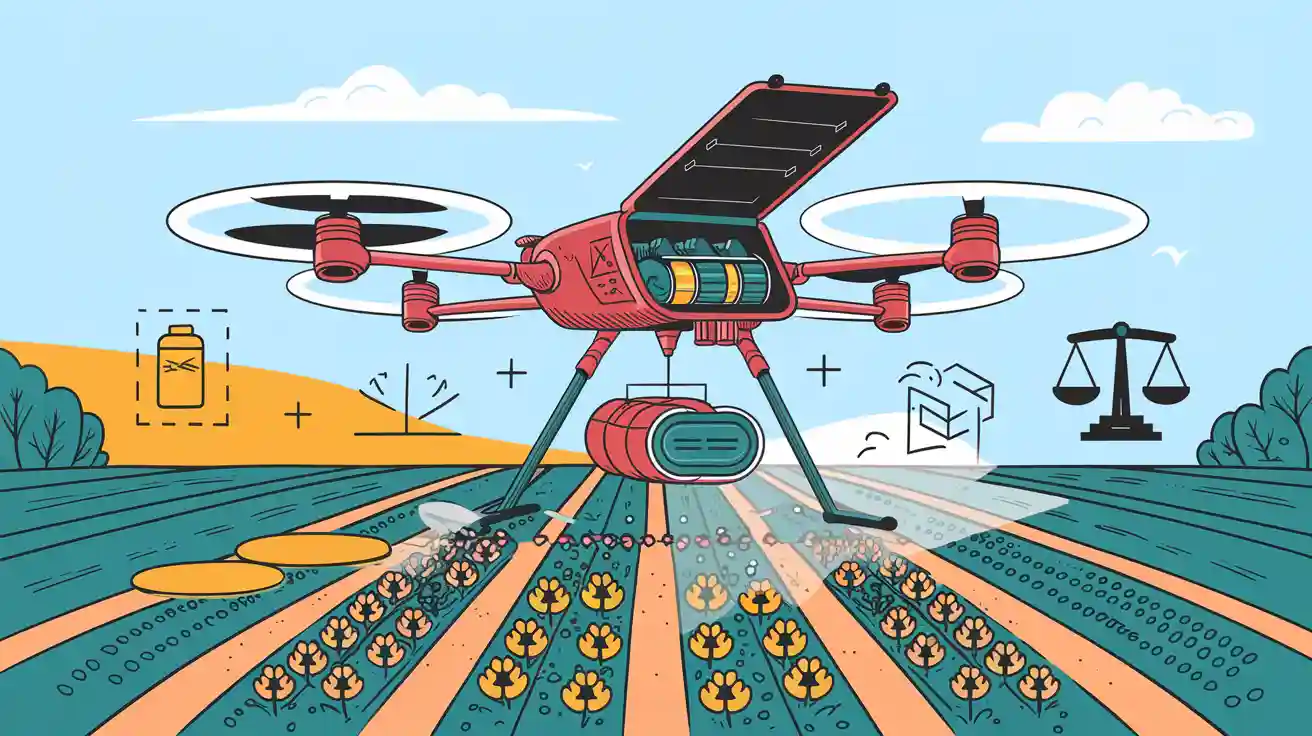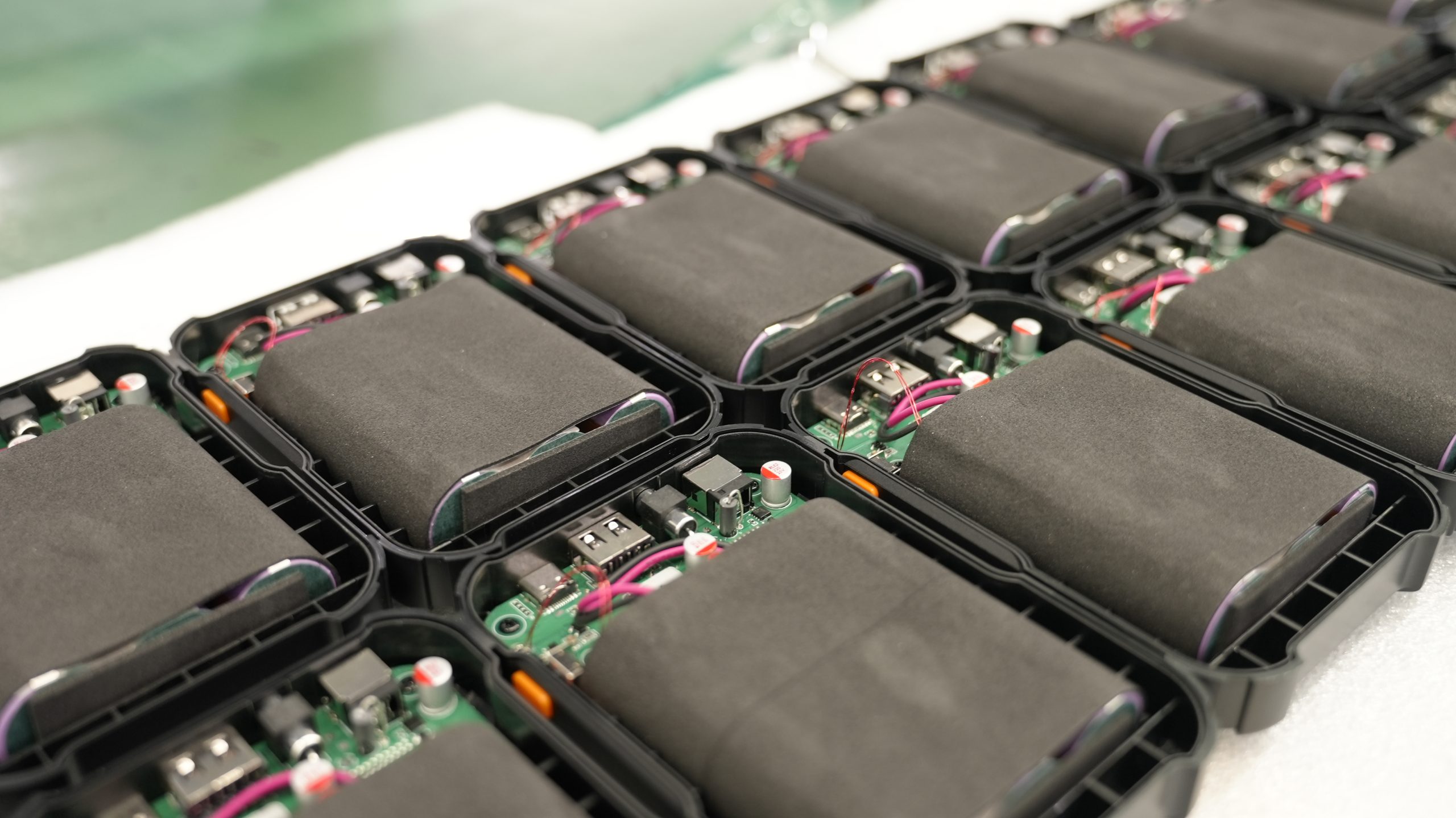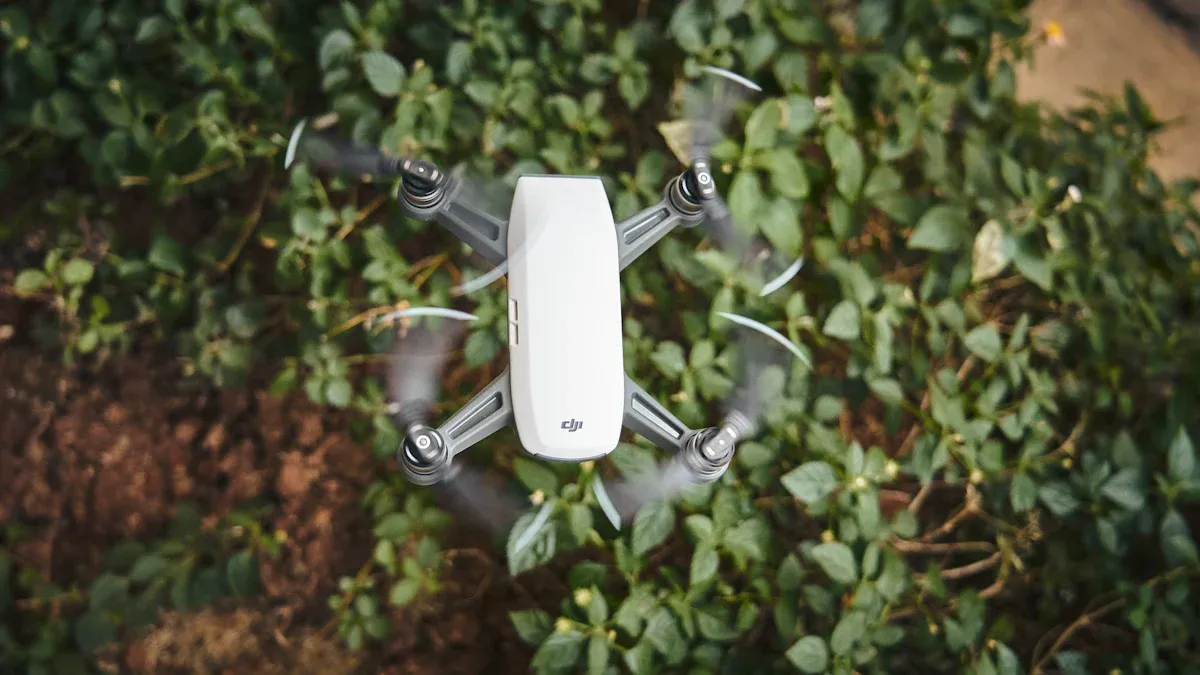
You face a critical challenge in agricultural drone operations: achieving the right energy-to-weight ratio. Your choice of battery directly shapes payload, flight time, and operational efficiency. Lithium battery packs now dominate as the industry standard for drones, enabling you to overcome many operational hurdles in demanding field conditions.
Key Takeaways
Understand the energy-to-weight ratio (Wh/kg) to select the best batteries for your drone. A higher ratio means more energy without extra weight, enhancing performance.
Choose batteries with high energy density to maximize flight time. Lithium-polymer and solid-state batteries offer advantages in weight and efficiency.
Regularly check battery weight and capacity to balance payload and efficiency. This practice ensures optimal performance during agricultural tasks.
Part 1: Energy-to-Weight Ratio and Drone Payload

1.1 Defining Energy-to-Weight Ratio
You need to understand the energy-to-weight ratio when selecting batteries for drones. This ratio, measured in Wh/kg (watt hours per kilogram), tells you how much electrical energy a battery can store for each kilogram of its weight. A higher energy-to-weight ratio means your drone can carry more energy without adding unnecessary mass. This metric serves as a key indicator for battery energy density and directly affects your drone’s performance in the field.
The energy-to-weight ratio in drone batteries is represented by Wh/kg.
This value shows the amount of energy stored per unit of battery weight.
It helps you compare different battery options for efficiency and suitability.
Manufacturers use advanced sizing methods and optimization techniques to calculate the best energy-to-weight ratio for agricultural drones. The table below summarizes these approaches:
Evidence Description | Key Insights |
|---|---|
Sizing Methodology | You select components based on weight and energy efficiency for optimal results. |
Optimization Techniques | You optimize gross take-off weight (GTOW) to achieve the best energy-to-weight ratio. |
Algorithm for Sizing | Predictive algorithms help you estimate GTOW with high accuracy. |
1.2 Impact on Payload Capacity
The energy-to-weight ratio determines the maximum payload your drone can carry. If you choose a battery with a high ratio, you can increase payload without sacrificing flight time. For agricultural drones, payload capacity varies widely based on battery capacity and drone design. The following table provides real-world examples:
Payload Capacity Range | Example Drone | Specific Capacity |
|---|---|---|
10 kg to over 50 kg | DJI Agras T40 | 40 kg (liquid), 50 kg (dry material) |
You must balance battery weight and payload to maximize efficiency. If you select a larger battery to boost battery capacity, you may reduce the available payload. Always consider the operational needs of your agricultural drones and the specific requirements of your field tasks.
Tip: Regularly review your drone’s energy-to-weight ratio and battery capacity to ensure you achieve the best balance between payload and operational efficiency.
Part 2: Energy Density in Drone Batteries
2.1 What Is Energy Density?
You need to understand energy density when evaluating battery options for your drone fleet. Energy density measures how much energy a battery stores relative to its weight. This metric is crucial for agricultural drones, as it determines how long your drone can operate before needing a recharge. Higher energy density allows you to maximize flight time without increasing the overall weight of your equipment.
When comparing lithium-ion and lithium-polymer batteries, you should consider their unique characteristics:
Lithium-polymer batteries offer high discharge rates and lightweight construction, making them suitable for quick, high-performance maneuvers.
Lithium-ion batteries provide higher energy density and longer cycle life. These batteries are heavier but deliver consistent power over extended periods.
Note: Selecting a battery with high energy density enables your drone to store more energy without adding significant weight, which directly contributes to longer flight durations.
2.2 Role in Battery Performance
Energy density plays a vital role in battery performance for agricultural drones. You benefit from advancements in battery technology that have increased energy density over the past five years. The following table highlights key innovations and their impact on drone operations:
Advancement Type | Description | Benefits |
|---|---|---|
Next-generation lithium | Development of lithium-based batteries with higher energy density. | Improved drone endurance with energy density of 410 Wh/kg, allowing longer flight times. |
Hydrogen fuel cells | Alternative power source generating electricity through chemical reactions. | Extended flight times and eco-friendly operation, ideal for high-endurance applications. |
Solar power integration | Lightweight solar panels integrated into drones. | Allows for mid-flight battery recharging, extending operational time without added weight. |
Material innovations | Research into lightweight and powerful battery materials. | Enables longer flights, faster charging, and safer operation with solid-state batteries. |
Hybrid power systems | Combination of batteries and fuel cells/supercapacitors. | Optimizes power consumption, allowing longer operation and consistent performance. |
You should prioritize batteries with high energy density to achieve longer flight times and improved operational efficiency. Innovations in lithium-ion batteries have enhanced energy density and lifespan, allowing drones to remain airborne for extended periods. The capacity of your battery remains the most critical factor influencing flight time and overall performance.
Part 3: Battery Weight and Flight Time

3.1 Battery Weight Effects
You must consider battery weight as a critical factor in agricultural drone operations. Heavier batteries require more energy to lift, which can reduce flight time and overall efficiency. When you increase battery weight, your drone consumes more power just to stay airborne. This cycle can limit the benefits of larger batteries, especially if the added weight does not translate into proportional gains in energy storage.
Heavier batteries demand more energy, leading to shorter flight durations.
Inefficient systems often require larger batteries, which further decreases flight time.
Environmental conditions, such as temperature and wind, can significantly affect battery performance. For example, extreme cold may reduce battery capacity by up to 25%, directly impacting flight time.
You should always evaluate the relationship between battery weight and energy efficiency. Balancing these factors ensures your drone operates at peak performance during agricultural tasks.
3.2 Balancing Flight Time and Efficiency
Balancing flight time and efficiency requires you to weigh the benefits of larger batteries against their drawbacks. While a bigger battery can store more energy, its increased weight may offset any gains in flight duration. The following table outlines common trade-offs:
Factor | Impact on Flight Duration |
|---|---|
Battery Performance | Decreases over time due to charging cycles |
External Conditions | Temperature and altitude affect battery efficiency |
Weight of Battery | Larger batteries increase weight, reducing flight time |
Cold temperatures and high altitudes can further reduce battery efficiency. You should select batteries that match your operational needs and environmental conditions. Modular drone designs allow you to swap batteries quickly, maintaining efficiency in the field. By focusing on improving flight time through optimal battery selection and weight management, you can maximize productivity and reduce downtime.
Part 4: Environmental Factors and Operational Sorties
4.1 Weather and Battery Performance
You must account for environmental factors when planning agricultural drone operations. Weather conditions such as wind, temperature, humidity, and altitude can significantly impact battery performance, flight time, and the number of sorties you can complete in a day. High winds increase the energy required to maintain stable flight, which reduces efficiency and shortens flight time. Low temperatures decrease battery capacity and battery life, making it harder to achieve optimal energy efficiency. High humidity can cause condensation, risking short circuits and permanent damage to electronics and mechanical parts. It also promotes corrosion, reducing the reliability of essential components and affecting battery weight and performance.
Factor | Impact on Drones |
|---|---|
High Humidity | Causes condensation, risking short circuits and permanent damage to electronics and mechanical parts. |
Promotes corrosion, reducing lifespan and reliability of essential components. | |
Affects flight performance by changing air density, impacting lift and battery efficiency. | |
Requires special storage and maintenance to mitigate adverse effects. | |
Advisable to shorten flight duration and perform thorough pre-flight checks in humid conditions. |
Altitude also affects air density, which changes lift and battery efficiency. You may notice that drones require more power to maintain altitude, increasing battery weight demands and reducing operational efficiency.
4.2 Optimizing Sorties in the Field
You can improve sortie numbers and maintain high energy efficiency by adapting your operational strategies. Start by scheduling flights during periods of mild weather to maximize battery performance and flight time. Use pre-flight checks to assess battery weight, battery capacity, and overall system readiness. Store batteries for drones in climate-controlled environments to prevent degradation from humidity or extreme temperatures.
Rotate batteries to balance usage and extend battery life.
Monitor real-time weather data to adjust sortie plans and avoid high-risk conditions.
Use modular drone designs to swap batteries quickly, minimizing downtime and balancing flight time with operational needs.
Tip: Always match battery weight and battery capacity to the specific requirements of each mission. This approach ensures you maintain high energy density and efficiency, even in challenging environments.
Part 5: Optimizing Drone Battery Strategy
5.1 Battery Management Systems
You need a robust battery management system (BMS) to maximize the performance and safety of lithium battery packs in agricultural drones. A BMS monitors voltage, current, and temperature in real time. This system protects batteries for drones from overcharging, deep discharge, and thermal runaway. You can also use a power control module (PCM) to further enhance operational safety and efficiency.
A well-designed BMS helps you:
Extend battery lifespan by preventing damage from improper charging or discharging.
Maintain optimal energy-to-weight ratio by ensuring each cell operates within safe limits.
Improve energy efficiency by balancing cells and reducing energy loss during operation.
Tip: Integrate a BMS into your drone fleet to reduce downtime and maintenance costs. This approach ensures consistent performance across all sorties.
5.2 Next-Gen Battery Technologies
You should stay informed about next-generation battery technologies that can transform agricultural drone operations. Engineers are developing solid-state batteries and lithium-sulfur chemistries to increase energy density and reduce weight. These advancements aim to improve battery stability and performance, which is essential for longer flight times and effective payload management.
Solid-state batteries now offer energy density values exceeding 400Wh/kg, compared to the 200Wh/kg limit of current lithium-ion batteries. This improvement in energy-to-weight ratio allows your drones to fly longer and carry heavier payloads. The table below compares key battery chemistries used in drones:
Chemistry | Platform Voltage (V) | Energy Density (Wh/kg) | Cycle Life (cycles) | Typical Application Scenarios |
|---|---|---|---|---|
Lithium-ion | 3.6–3.7 | 150–200 | 500–1,000 | Medical, Robotics, Security, Infrastructure, Consumer Electronics, Industrial |
LiFePO4 | 3.2 | 90–140 | 2,000–5,000 | Industrial, Medical, Security |
Lithium-polymer/LiPo | 3.7 | 150–220 | 300–800 | Consumer Electronics, Drones |
Solid-state | 3.7–4.2 | 300–450 | 1,000+ | Robotics, Drones, Medical |
Lithium-sulfur | 2.1 | 350–500 | 300–500 | Under Development |
You can see that solid-state batteries and lithium-sulfur chemistries offer significant improvements in energy density and energy-to-weight ratio. These technologies will help you achieve higher energy efficiency and longer operational sorties in the future.
Note: If you want a custom battery solution for your agricultural drones, consult Large Power.
5.3 Practical Tips for Operators
You can maximize payload and flight time by following proven operational strategies. Use these best practices to extend battery life and improve energy efficiency:
Use reliable charging equipment for consistent charging cycles.
Account for environmental factors such as temperature and wind before each sortie.
Prioritize regular maintenance and proper storage of batteries for drones. Store batteries in a cool, dry place between 68°F and 72°F, and use a fireproof container for added safety.
Plan spray missions in advance and adjust spray patterns to match field geometry. This reduces unnecessary energy consumption.
Use higher-capacity batteries for longer flights, but always consider the impact on total weight.
Fly in ideal weather conditions to prevent excessive battery drain.
Minimize unnecessary weight by removing non-essential equipment from your drones.
Choose efficient flight modes to conserve energy during operations.
Charge batteries before each flight and avoid overcharging to prevent damage.
Never fully drain batteries; partial discharges help extend battery lifespan.
Carry spare batteries to ensure you can complete all planned sorties.
Callout: Store batteries at 40–50% charge if you plan to keep them unused for more than 48 hours. This practice helps maintain battery health and performance.
You should also plan spray missions in 6–8 minute intervals and use a 9,000-watt generator for rapid recharging in the field. This approach keeps your drone fleet operational and maximizes the number of sorties per day.
By following these strategies, you can optimize the energy-to-weight ratio, improve energy density utilization, and achieve greater operational efficiency in your agricultural drone operations.
You must optimize the energy-to-weight ratio and energy density to improve battery performance in agricultural drone operations. Focus on battery management to extend battery life and maximize flight time.
Schedule regular battery checks.
Match battery size to mission needs.
Future battery technology will help you achieve longer flight time and greater efficiency.
FAQ
What are the main differences between lithium-ion, LiFePO4, and solid-state batteries for agricultural drones?
Chemistry | Platform Voltage (V) | Energy Density (Wh/kg) | Cycle Life (cycles) | Application Scenarios |
|---|---|---|---|---|
3.6–3.7 | 150–200 | 500–1,000 | Medical, Robotics, Security, Infrastructure, Consumer Electronics, Industrial | |
3.2 | 90–140 | 2,000–5,000 | Industrial, Medical, Security | |
3.7–4.2 | 300–450 | 1,000+ | Robotics, Drones, Medical |
You should select chemistry based on your operational needs, required cycle life, and payload demands.
How can you maximize the operational lifespan of lithium battery packs in agricultural drones?
You should use a battery management system, avoid full discharges, store batteries at optimal temperatures, and schedule regular maintenance checks.
Does Large Power offer custom lithium battery solutions for agricultural drone fleets?
Yes. Large Power provides custom lithium battery solutions for B2B drone applications.




